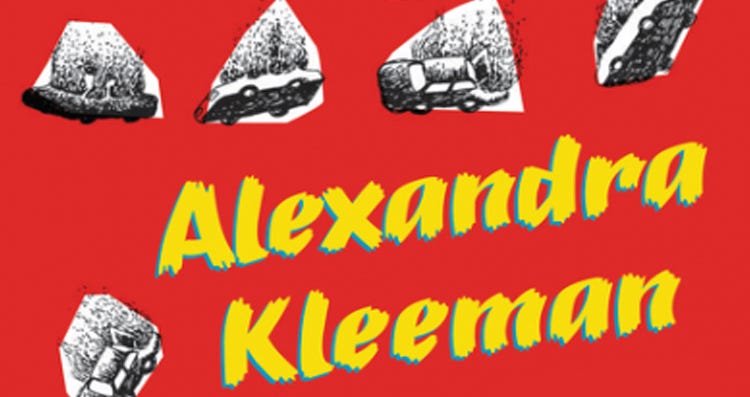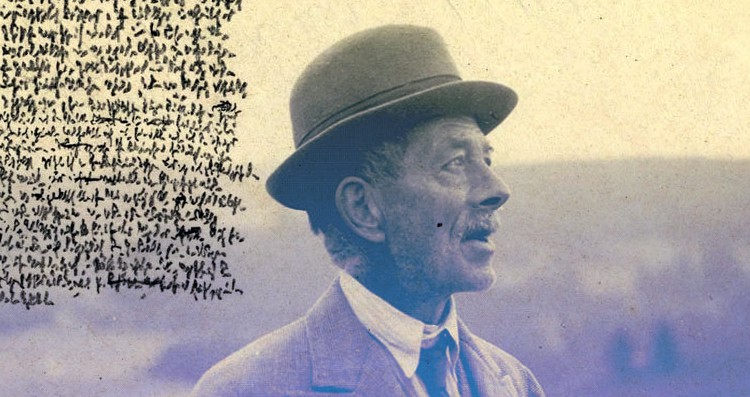Books & Culture
No Exit
Alexandra Kleeman’s short story collection is as claustrophobic as it is clever

Books and stories are a form of escapism for many of us. We read to go away from our current lives, or to learn about people who are vastly different from us, or to be swept up by language, or — well, a list of reasons we read would be endless. But escapism is definitely there, whether it’s something we seek or only a byproduct. The stories in Alexandra Kleeman’s new collection, Intimations, both distressingly and beautifully convey a different message: there is no escape.
In the opening story, “Fairy Tale,” for example, the narrator is dropped into somewhere unknown, mid-scene, mid-dinner. Sitting at a table with the narrator are her parents and an unfamiliar man (I am assuming the narrator is female only because of context clues but in truth, her gender, and that of several of the other narrators, is indeterminate). She desperately tries to figure out what’s going on:
I was looking at all of the things and trying to notice connections between them. Why this table, why now? Why these things and not others?
More men appear later, all apparently past boyfriends or lovers, and a suitor begins chasing the narrator with a kitchen knife, with the declared aim of murdering her. When he catches up to her, she knows it’s time to start running again but it’s unclear if she does. There is a sense of the story ending with the narrator stuck inside it, perpetually on the brink of death. And somehow, terribly, she implies early on that it may be her own fault:
The whole situation felt as unreal as something could while also feeling sorely, mortally dangerous. It seemed to draw strength from my speech, as in: the more I spoke within it, accepting its premises, the more I spoke into it without screaming at it, the more it made me whoever this position demanded.
That dwelling within a situation’s rules and accepting them makes the situation real is entirely apt. It describes not only the characters in these strange and often upsetting stories but also the way a reader sinks into them. “Fairy Tale” itself can serve as a metaphor for various things: a series of abusive relationships, a feeling of displacement within one’s own life, alienation from decisions made in the past, and more. But in relation to the other stories in the collection, this is secondary to the feeling of inescapability.
Another story, “A Brief History of Weather” which is actually the longest story in the book (and which it must be said, though Kleeman may be tired of the comparison, is extremely reminiscent of Ben Marcus’s The Age of Wire and String) is even more literal. Though the story is woven around concepts that seem to redefine natural laws, it is, essentially, about a house that is locked and shut tight and impossible to leave. It is a house whose essence is repelling weather, keeping any and all weather, fair or foul, out. Its isolation is maddening enough for the partial narrator to invent a sister for herself so that she has a companion. Though in some ways the most closed off of the stories, it is also the only one that gives a momentary escape at the end, one which after the story’s own closeness is a vast relief.
In the collection’s title story, the narrator finds herself in a place without doors, and her introduction to the story is a vivid reminder of how important doorways are, whether physical or metaphorical:
I was trying to think of all the different things I liked about doors. Their size, their heft, the sense that they were made for bodies to pass through them freely. The way they put holes in spaces in which you would otherwise be trapped forever, looking for some way in or out. All of the best moments in my life had been preceded by entering or exiting a door, or maybe just having a door waiting there in the background, offering the possibility of escape. They were the only thinks I could think of that were truly reversible: no clear beginning or ending, passing endlessly through a series of midpoints and temporary stops. They were beautiful in this revocability, flexible and soft.
If this definition of doorways holds true to the collection, then each of the stories takes place between doorways — the opening page and the ending one — but those doorways are only open to us, the readers, whereas the characters are locked into their limited house of the pages provided. One could argue that any short story — any text, really — is like this, but Kleeman’s Intimations draws attention to this whereas most short stories don’t. She manages to both draw us entirely into her fiction and keep us at a distance, as spectators glancing through a window or walking through the stories like ghosts able to walk through walls.
Another theme that many of the stories share is an examination of relationships: the ones we get stuck in and remain inside of, the ones we choose to leave yet can’t, and the ones we lose but don’t ever truly escape. And in all of them, the feeling of trauma — something we can deal with in a variety of ways but which never really goes away, and which, in other words, we remain trapped inside of, to some degree or other, forever — is pervasive. In “Jellyfish,” one of three stories featuring a woman named Karen, the only mention of it comes up: “she had always believed that a person without trauma was dangerous in some way, untested.” Indeed, Kleeman puts her characters through the ringer in various forms of traumatic situations, from being jailed in a house (there is more than one story about this) to being stuck inside an unfamiliar and dangerously alien situation (ditto) to almost losing a baby to the apocalypse.

With eight of the twelve stories previously published, the collection is bookended by previously published stories — “Fairy Tale” appeared in The Paris Review and “You, Disappearing” appeared in Guernica — which is an odd choice for an editor to make as often readers come into collections expecting new stories by the author, especially one with a much-beloved novel out already (You Too Can Have A Body Like Mine came out in the summer of 2015). But in looking back at the stories, the choice of arrangement strengthens the overall feeling of encasement that the stories bring up.









